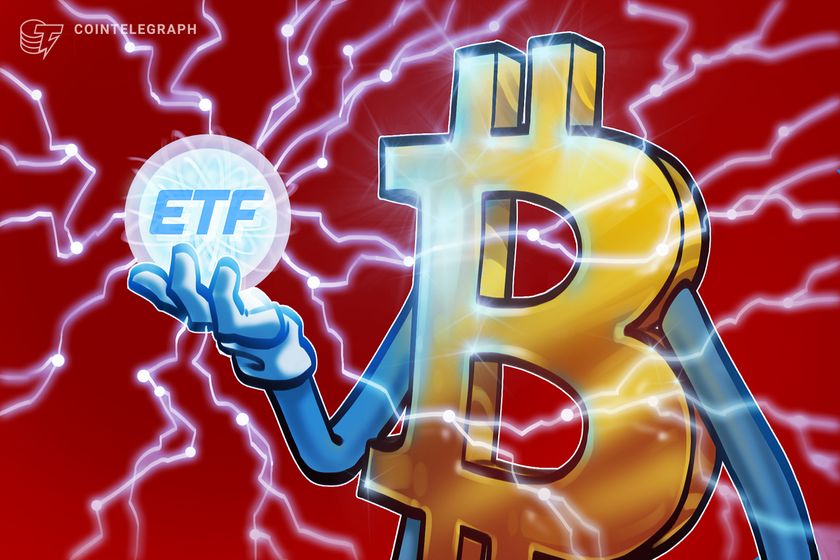Bitcoin ETFs are 'orange FOMO poker chips' that siphon on-chain funds back into TradFi

Despite promising to bring more baby boomers into Bitcoin, the United States spot Bitcoin exchange-traded funds (ETFs) could pose a greater risk to on-chain adoption and liquidity.
One of the biggest concerns with ETFs is how they could cannibalize on-chain liquidity, according to Jim Bianco, founder of macro research firm Bianco Research, who wrote in a May 19 X post:
“Pulling money off-chain into the Tradfi world in the form of an orange FOMO poker chip will not get digital assets to the promised land of a new decentralized financial system. If anything, it is getting in the way of this goal.”
The warning comes during a decisive week for Bitcoin (BTC) price, which is trading below a crucial resistance line. Bitcoin could rally to new all-time highs if it manages to decisively break above the $67,500 mark, Markus Thielen, the head of research at 10x Research.
However, instead of facilitating more adoption, the ETFs seem to be pulling on-chain liquidity into the world of traditional finance (TradFi), which was a long-standing concern for the macro researcher.
This is evidenced by the Q1 financial results of Coinbase, which showed that revenue stood at $1.64 billion despite retail trading volume being just half of 2021 levels. Meanwhile, institutional trading volume increased to $256 billion in the first quarter from $215 billion in Q1 2021.
According to Bianco, this is a sign of Coinbase balancing institutional growth to offset retail trading decline:
“Above is $COIN telling us that retail still thinks on-chain is too hard, and $COIN is too limiting? They would rather own BTC in a Tradfi brokerage account? In other words, are they content with a receipt (ETF) that trades on the NYSE that they own BTC in a regulated account rather than adopting the new financial system directly?”
In any case, the findings could raise a problematic question for Bitcoin’s narrative as a decentralized alternative to the fiat fiscal system. Bianco wrote:
“If the goal is to develop a new financial system, an ETF dragging money back into the Tradfi world is not getting to that promised land.”
Moreover, the ETFs have also failed to attract baby boomers, as over 85% of the underlying BTC is held by retail investors, with only 10% held by hedge funds. ccording to Bianco:
“Throughout the quarter, we were confidently told boomers were calling their wealth managers and telling them to get into BTC. This is not the case for 95+% of the Spot BTC ETF holdings.”
Inflows from the U.S. Bitcoin ETFs turned positive on the week of May 6, following a three-week slump of net negative outflows. The U.S. Bitcoin ETFs amassed over $200 million worth of cumulative net inflows during the past week, according to Dune data.

Related: Trader turns $2.2K of SOL into $2.26M in 8 hours with new memecoin
Bitcoin ETF price combined with average purchase price indicates retail trading behavior
The average purchasing price of the spot Bitcoin ETFs stood between $58,000 to $59,000. There was a widespread sell-off when Bitcoin fell below the $60,000 mark at the beginning of May, suggesting that retail investors are behind the majority of these moves.
“When the price went to this level on May 1, these ETFs had record outflows. Now that the price is well above this average price, outflows stopped. This is Degen behavior,” Bianco said.

Institutional inflows from ETFs were a significant part of the current Bitcoin rally to new all-time highs. By Feb. 15, Bitcoin ETFs accounted for about 75% of new investment in the world’s largest cryptocurrency as it surpassed the $50,000 mark.

